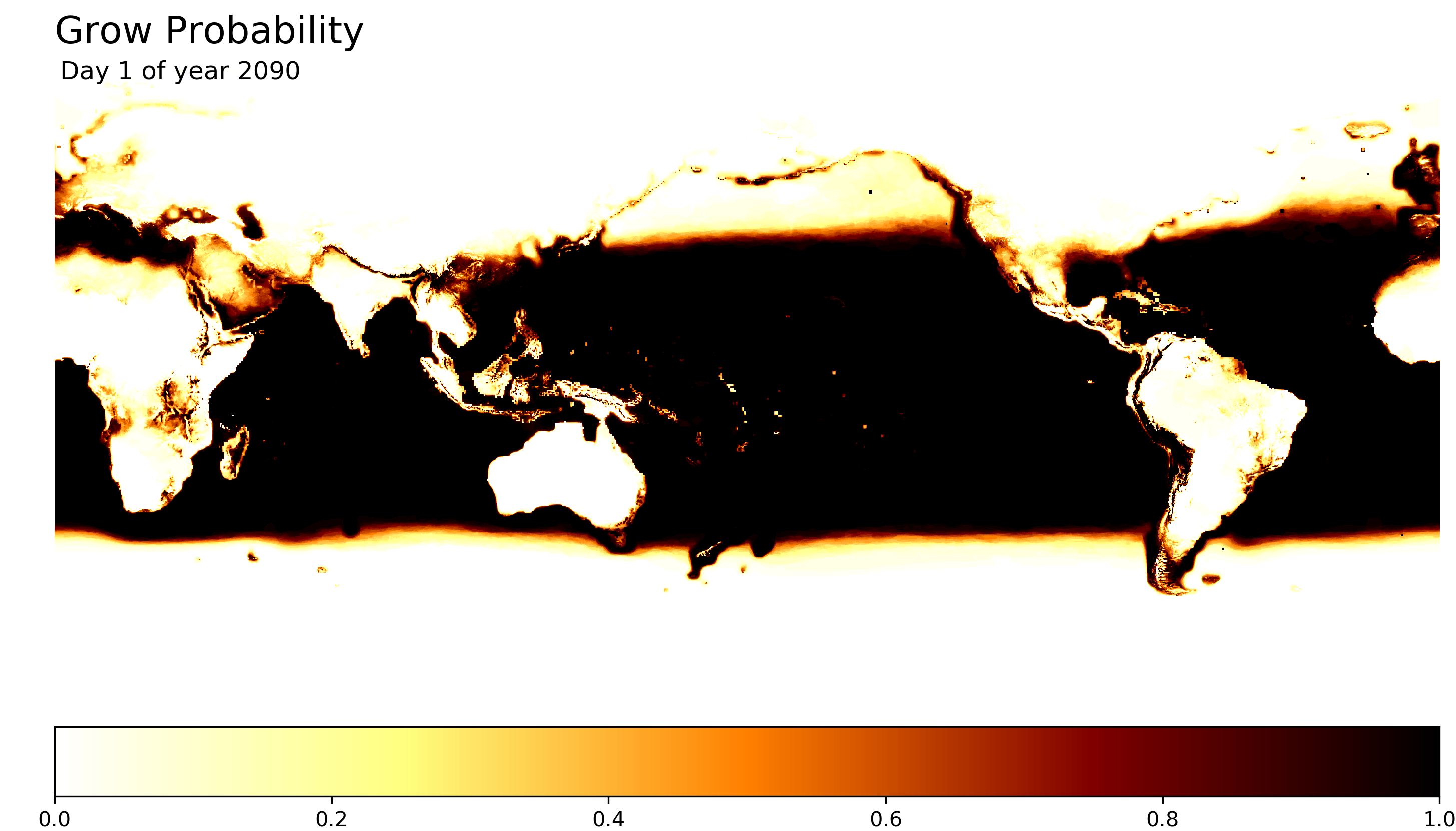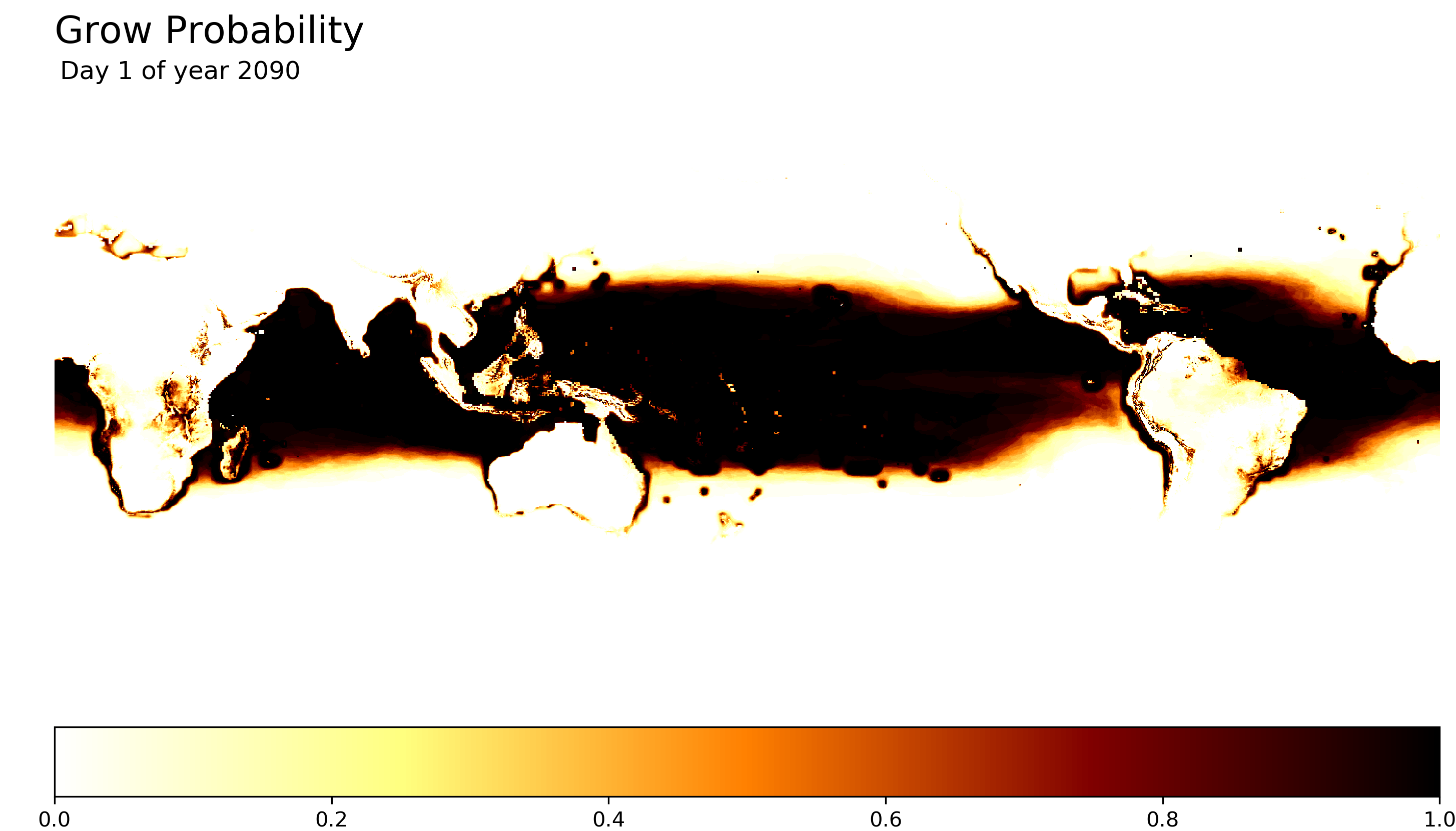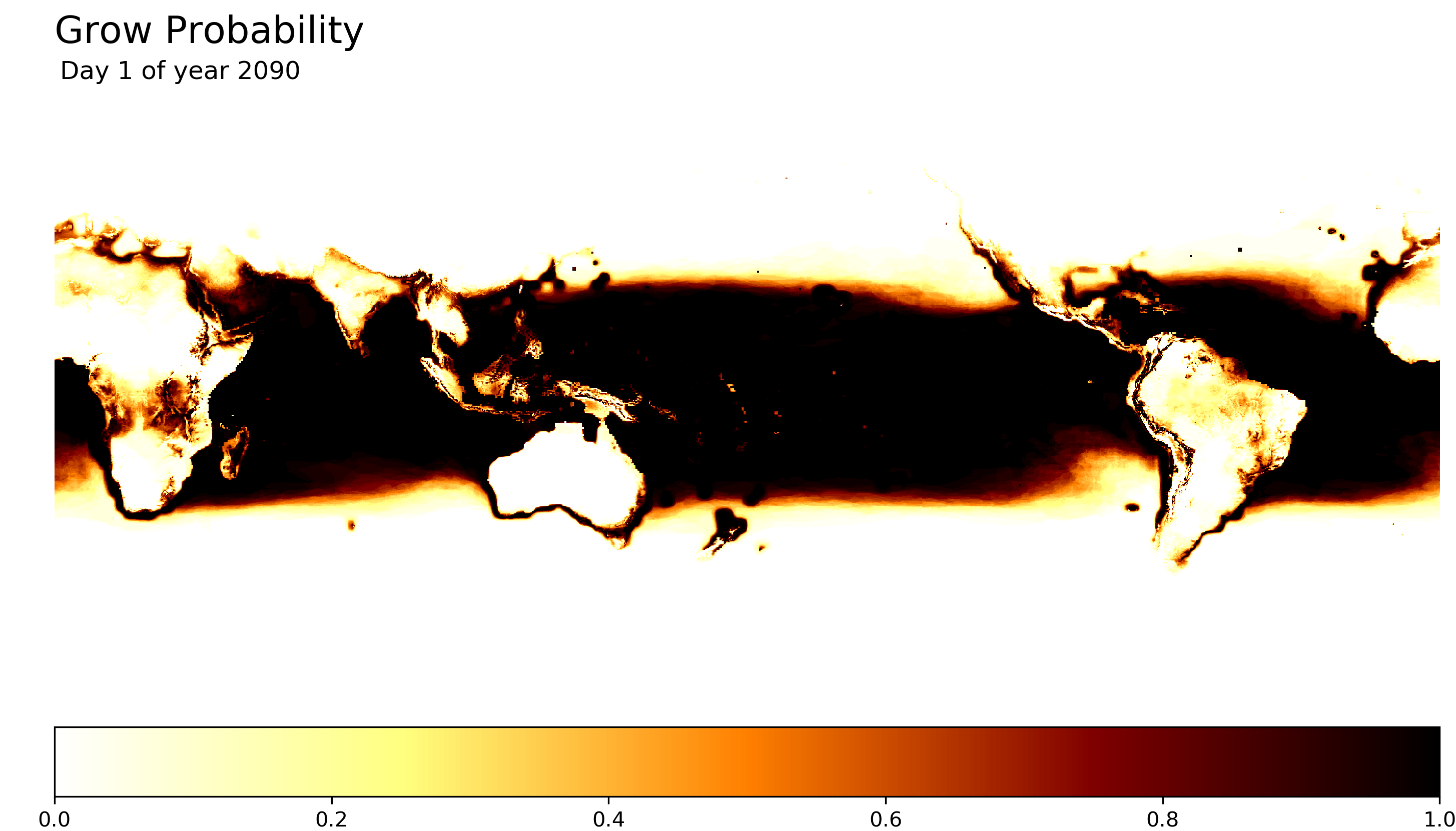Predicting crop growth with NASA's NEX-GDDP climate projections. Animations in examples show where and when some crops will likely grow worldwide between 2090 and 2099. This is a lot of data crunching (and starts getting expensive), I'm slowly processing examples.
Plant growth, from seed to maturity, can be estimated by adding Growing Degree-Day (GDD) values. GDD measures how much heat a plant experiences in a day of a growing season, simply calculated by:
Where Tmin is the minimum daily temperature, Tmax is the maximum daily temperature, and Tbase is a base temperature above which the plant grows. The GDD equation is extended to incorporate a critical top temperature, above which plants cannot survive, to handle possible projections of extremely hot temperatures.
The base temperature and top temperature values are known for many different plant species.
Accumulated GDD (AGDD) is the sum of consecutive non-zero GDDs and represents the amount of heat a plant would experience in a growing season. Studies have matched AGDD values to the stage of development for many plants. In wheat (Hard Red), for instance, leaf tips start emerging from the ground at about 145 AGDD and the plant fully matures at about 1665 AGDD. Crop to the Future uses NASA's climate projections to calculate AGDDs and predict where plants could grow.
The NEX-GDDP dataset contains 21 climate models under 2 greenhouse gas scenarios. Each of the 42 models forecast daily minumum and maximum temperatures for small grids of about 25km x 25km across the globe up until the year 2099 (about 12TB of data).
For a given plant and NEX model, the GDD is calculated for every day of a year in each grid cell. Then, at every day in each grid cell, the GDD is accumulated for the next 365 days, with the accumulation stopping if the GDD is zero. The given plant is assumed to be able to reach maturity on days where the AGDD is above the maturity threshold. The probability of growth in a cell is the number of NEX models where growth is possible out of all the models.
Hard Red is a popular variety of wheat grown around the world. The wheat grows when temperatures are above 0°C and below 34°C. Within the temperature range, an AGDD of 1665 is required for the wheat to develop to maturity.
Full animations can be found here:
| Year | Year |
|---|---|
| 2090 | 2095 |
| 2091 | 2096 |
| 2092 | 2097 |
| 2093 | 2098 |
| 2094 |
Corn has a base temperature of 10°C, a maximum critical temperature of about 35°C, and strains differ in AGDD to reach maturity .
See full animations here:.
| Year | Year |
|---|---|
| 2090 | 2095 |
| 2091 | 2096 |
| 2092 | 2097 |
| 2093 | 2098 |
| 2094 |
This corn strain grows nearly nowhere. Maybe it's poor input values. Or maybe this strain will struggle in the future. Other strains grow at lower AGDD and could be better suited.
See here for more:
| Year | Year |
|---|---|
| 2090 | 2095 - processing |
| 2091 | 2096 - processing |
| 2092 | 2097 - processing |
| 2093 | 2098 - processing |
| 2094 |
Still processing some years.
Upland rice doesn't need to grow in paddy fields; it has a base temperature of 8.2°C, maximum critical temperature of about 35°C, and requires an AGDD of around 2100 to reach maturity.
processing
- There are other important factors in plant growth, like soil quality and water levels, but temperature is the most outside human control.
- I don't include precipitation, so the assumption is that the crops will have proper irrigation. Future plans could look for like monsoons or adequate rainfall for growth.
- Predictions are made for land and sea. Maybe one day we grow crops on barges, but until then, it would be nice to remove sea grid cells.
The NEX datasets are in an AWS S3 bucket in the US West (Oregon) region and processing (specifically transferring data) is fastest on Oregon instances.
The NEX-GDDP data is available on AWS. To mount the data on an instance, run:
sudo apt-get update
sudo apt-get upgrade
sudo apt-get install automake autotools-dev g++ git libcurl4-gnutls-dev libfuse-dev libssl-dev libxml2-dev make pkg-config
git clone https://github.com/s3fs-fuse/s3fs-fuse.git
cd s3fs-fuse
./autogen.sh
./configure
make
sudo make install
sudo sed -i -e 's/#user_allow_other/user_allow_other/g' /etc/fuse.conf
mkdir /home/ubuntu/nex-gddp
sudo s3fs -o allow_other,default_acl='public_read',public_bucket=1,uid=1000,gid=1000,umask=722 nasanex:/NEX-GDDP /home/ubuntu/nex-gddp/
- run
sudo apt-get install hdf5-tools - download and install Julia
- add packages: JLD, NetCDF


